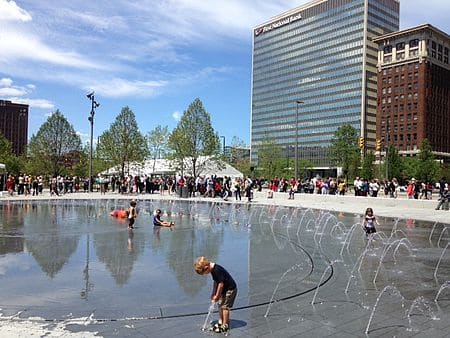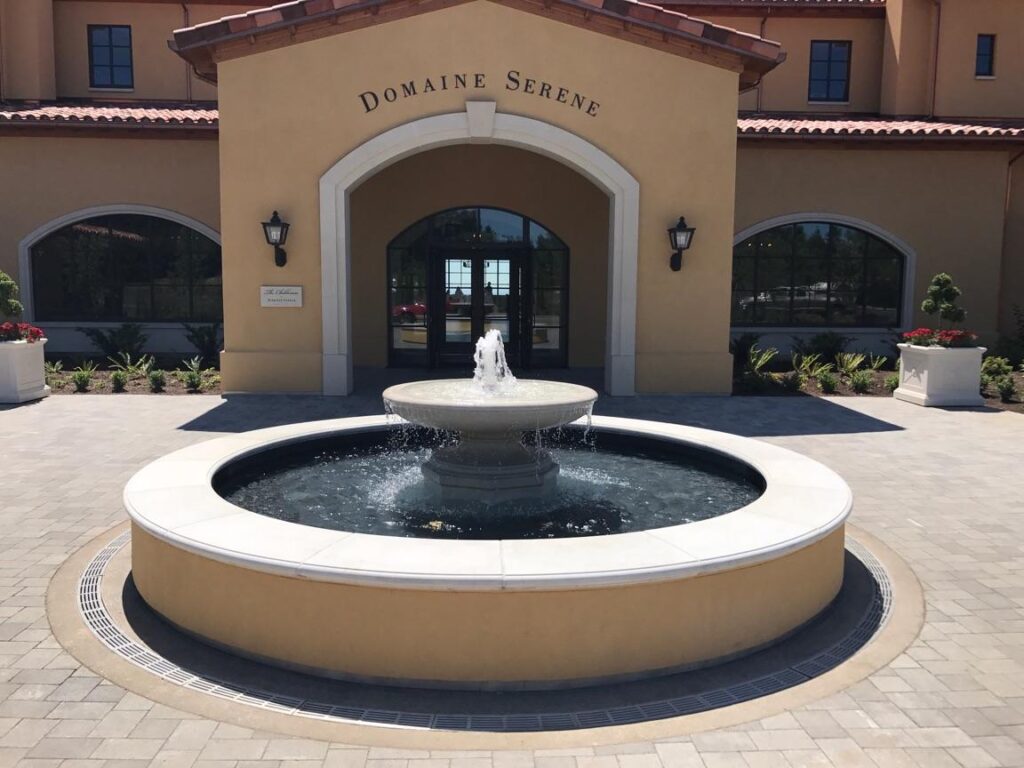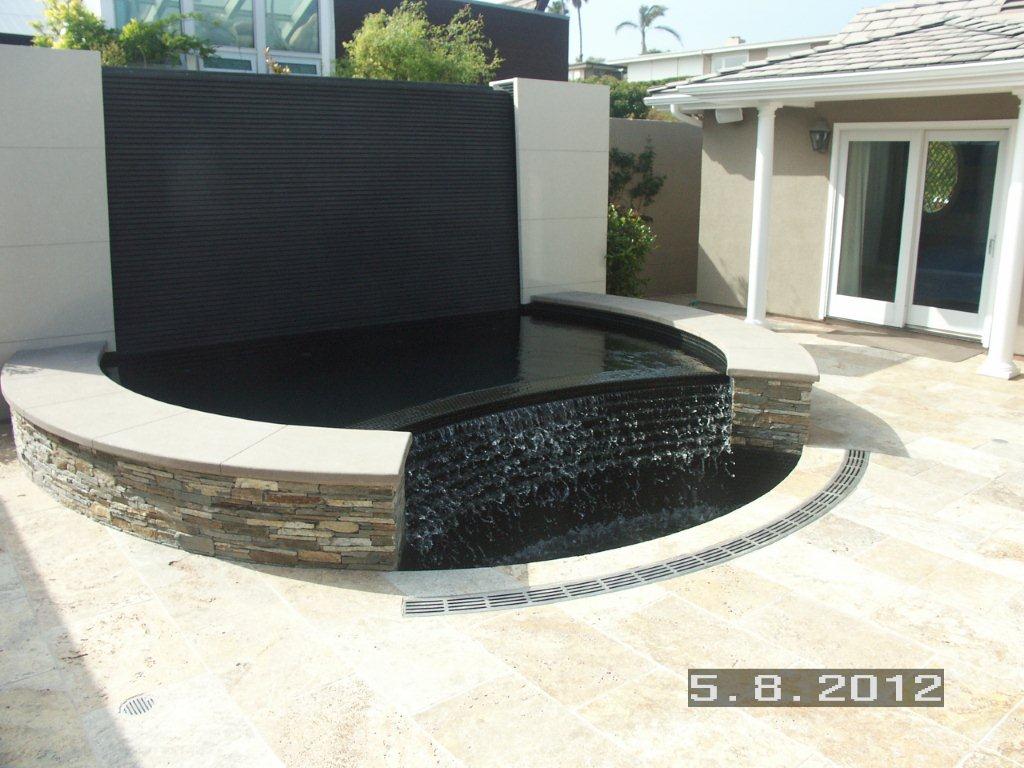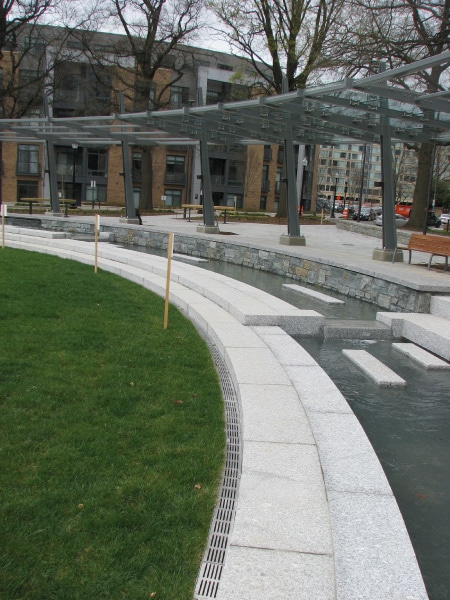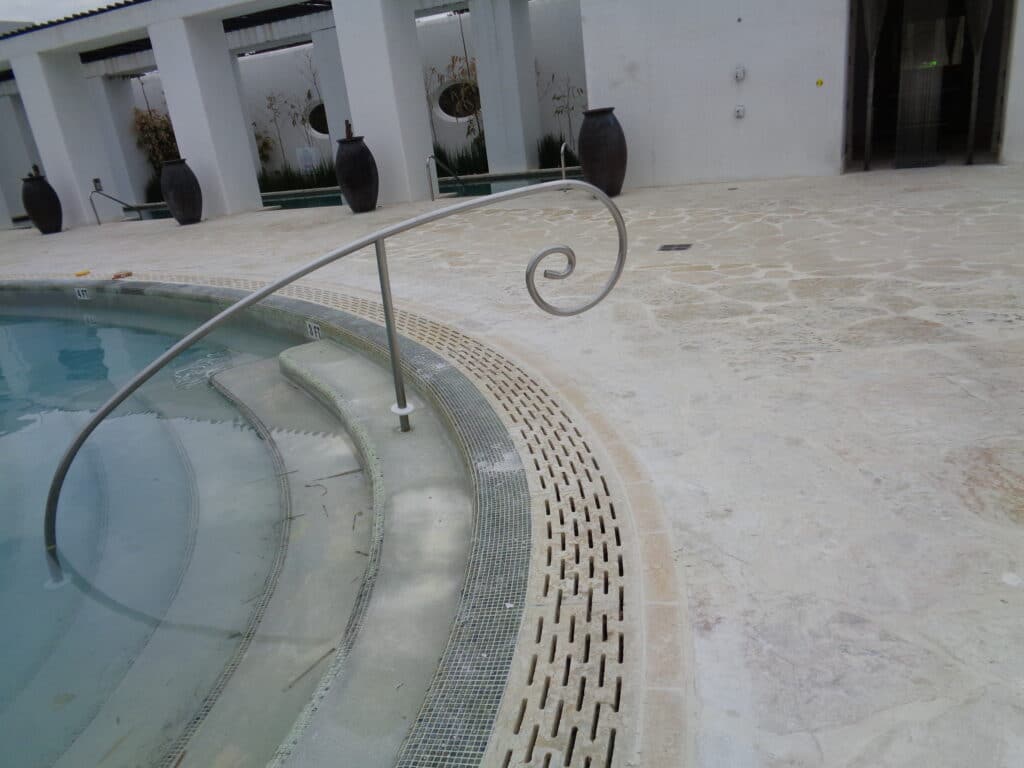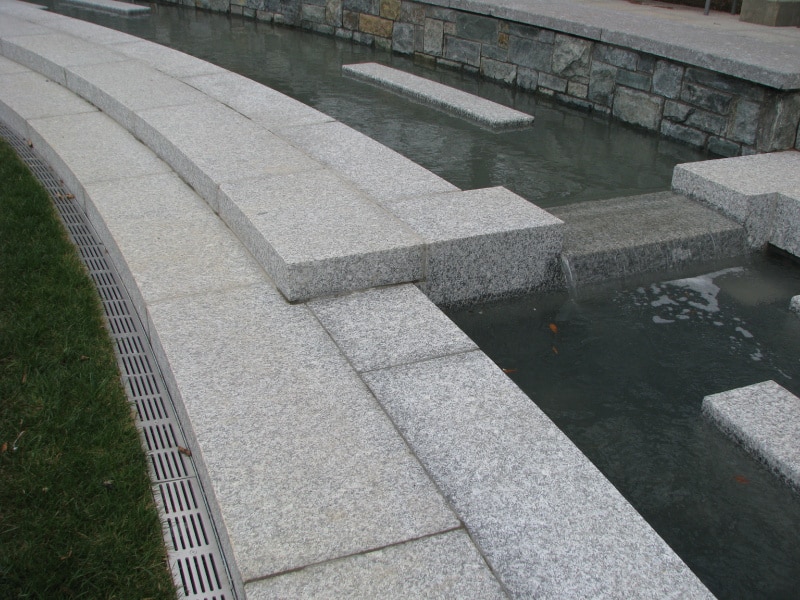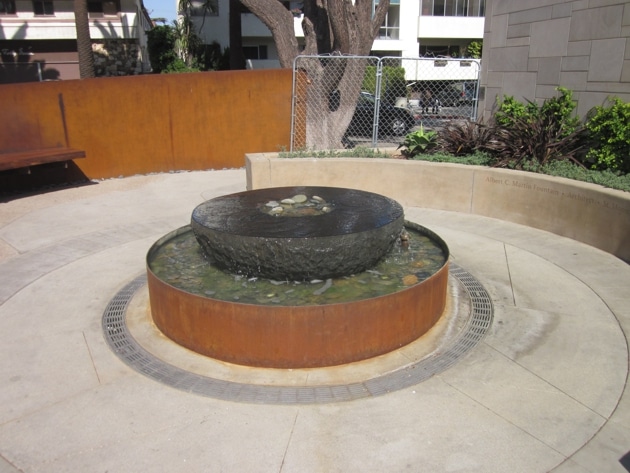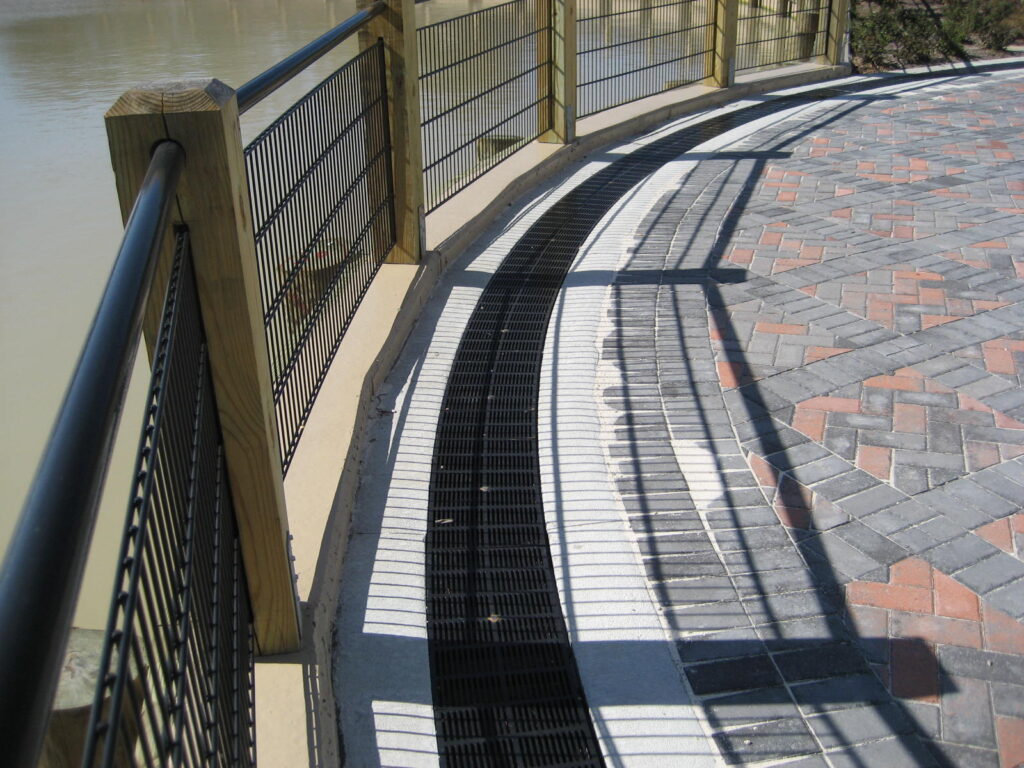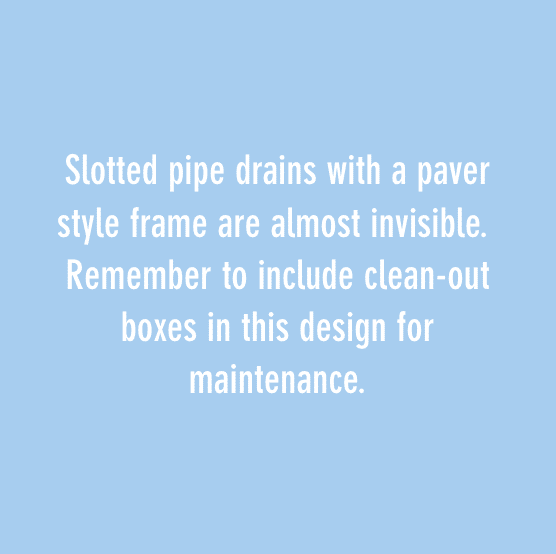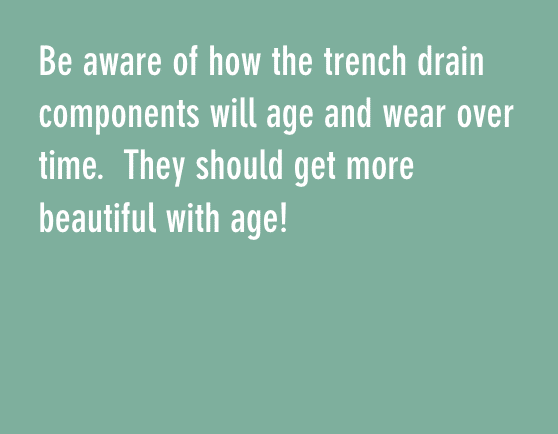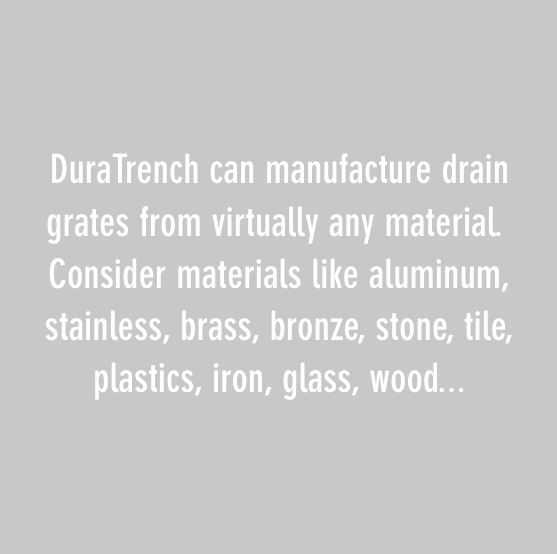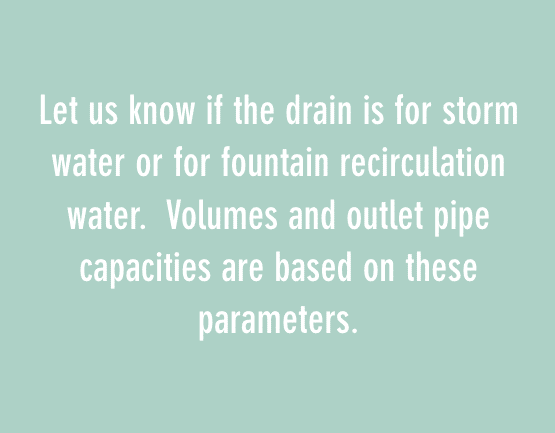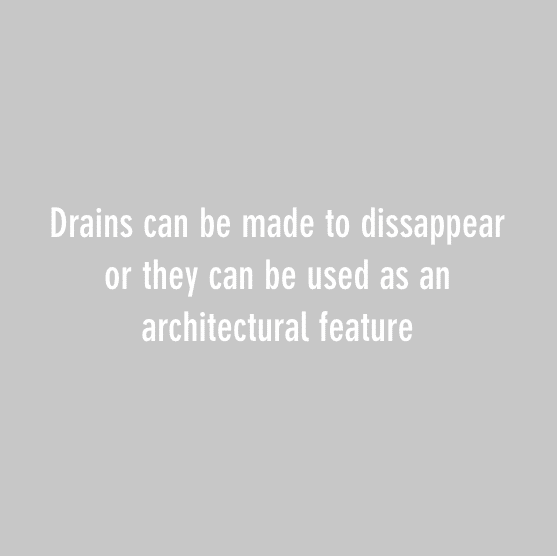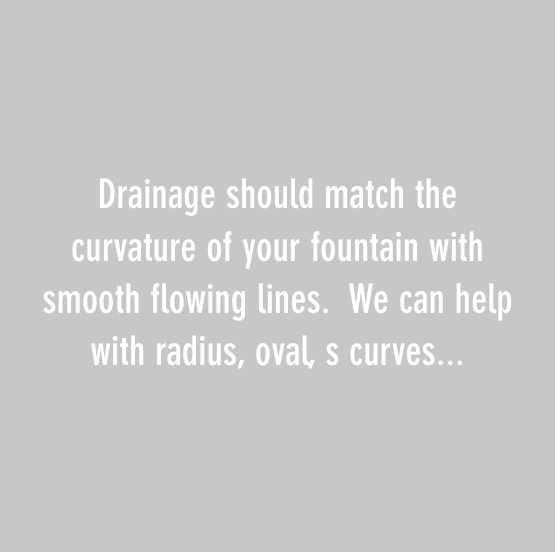Fountains and water features are often interactive and in the public. Trench drains are a good way of containing the water that splashes or runs off of the fountain. Fountains are found in patios, courtyards, atriums, or other areas that are dry by nature. Due to the high visibility, these drains often require highly decorative gratings and or on a radius. Dura Trench manufactures a wide variety of custom trench drains, slot drains, and trench grating for these highly specialized applications.
Trench Drains and Slotted Drains for Fountains & Water Features
Design Considerations
Sizing the drain
- The flow can be very small due to splashing or extremely large and intended to catch all of the flow of the fountain. Typical drain sizes are from 2″ to 12″
- The channel size will need to be determined by the flow rate of the fountain and the number of outlets in the trench.
Choosing the channel
- Fountains can be exterior or interior applications. Fountains typically only receive pedestrian traffic. The channels can typically be light duty due to the light traffic.
- A similar material to the concrete encapsulating the channel is always a good idea, however, it is less critical in interior applications than exterior applications. Choose fiberglass, concrete, fiberglass, metal, or HDPE channel material. If the channel will be exposed to vehicular traffic it is wise to choose a system with a heavy duty frame that can handle the dynamic forces of the vehicular traffic braking and turning on top of the drains.
- Because the water is recycled, the joints should be sealed to eliminate water losses. A flexible sealant or caulking is usually sufficient for these joints.
Selecting the grate
- Depending on the design the trench drain it may see pedestrian traffic, vehicular traffic, or almost no traffic at all.
- For trenches that will have pedestrian traffic the grates need to be ADA compliant.
- All of the grates need to be corrosion resistant due to the constant exposure to moisture. Most fountains are using chlorine or other chemicals to maintain water clarity. These chemicals can cause grates to tarnish, rust, or otherwise deteriorate. Typically we see stainless steel, aluminum, bronze, ductile iron, fiberglass, or plastic grates.
- For most fountains, the aesthetics are every bit as important as the function. There are many decorative patterns and custom grates that can be used to get exactly the right look.
Designing the layout
- The drain must capture all of the water so in some cases it must go all the way around the fountain. The drains can be rectangular, circular, oval, or any combination of these. The imagination is the limiting factor on what can be manufactured.

